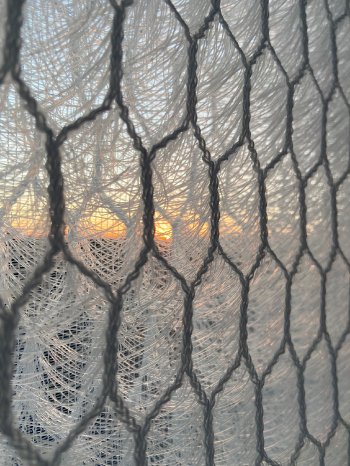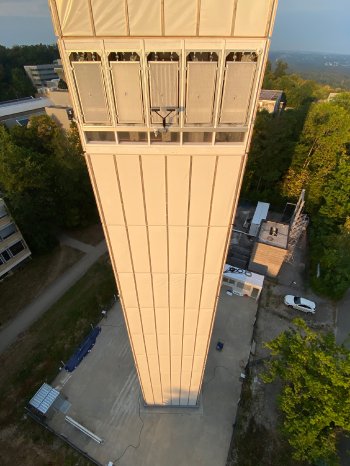An essential risk factor for catastrophic climate events is the high degree of soil sealing in cities. Asphalt and concrete surfaces absorb the incoming solar radiation and transform it into heat. In contrast to green areas, the evaporation of water – and thus the natural regulation of the microclimate – is also restricted by sealed streets and building surfaces. The result is urban heat islands.
There is no space for rainwater reservoirs or retention basins in inner-city areas. Incoming rainwater must be channeled almost entirely into the sewer system, where it causes an overloading of the sewer system with severe flooding due to increasing precipitation rates and more sealed areas subject to runoff.
Urgently required are urban areas for rainwater retention and regulation of the microclimate through evaporation cooling – areas that do not occupy valuable urban living space – in order to take effective and economical action against these climate risks, which are becoming ever more acute.
Christina Eisenbarth of the Institute for Lightweight Structures and Conceptual Design at the University of Stuttgart has now created a universally applicable solution for climate adaptation in cities. This architect has developed a hydroactive facade system that functions as an artificial retention area in the building envelope.
These lightweight textile facade elements bear the name “HydroSKIN”; they absorb the rainwater that hits the building envelope at an angle, and they release water in hot periods in order to cool the building interior and urban space naturally through evaporation. The size of the elements is flexible. Their minimal surface weight enables easy mounting on all conventional facades in new construction and on existing buildings.
The core element of HydroSKIN is a so-called spacer fabric, two textile layers, which are kept apart by threads and thus well-ventilated. The excellent air circulation encourages the evaporation of water and magnifies the facade's cooling effect. The fabric is surrounded by a water-permeable textile envelope on the outside; this allows nearly all raindrops to penetrate and at the same time, protects the fabric against contamination by insects and leaves. A film on the inside deflects the water to the lower profile system. From there, it can either be saved in a reservoir or used directly in the building to reduce water consumption. On hot days, water is deflected back into the facade element, where it evaporates, providing a natural cooling effect. Both the building interior and its surroundings are cooled this way.
Tall buildings offer special potential for hydroactive building envelopes, and not just because of their immense facade area. As buildings grow taller, due to the high wind forces, rain hits the building facade as driving rain at an angle, so that starting at a height of approximately 30 meters, more rain hits the facade than a horizontal roof of the same size. Furthermore, high wind speeds increase the evaporation cooling effect, which means that a cool airflow results, which then moves downward into the urban space.
Laboratory tests have proven that the surface temperature of the HydroSKIN facade could be lowered by approximately ten degrees due to the evaporation cooling effect. Now these hydroactive facade elements are being tested under actual weather conditions on the University of Stuttgart’s D1244 high-rise. Five HydroSKIN elements were attached to the tenth floor of the adaptive high-rise, where, thanks to extensive measurement equipment, the facade’s ability to absorb water and its evaporation performance are recorded during hot periods.
A patent is pending. Technologie-Lizenz-Büro (TLB) GmbH supports the University of Stuttgart in patenting and marketing its innovations. TLB has been commissioned to sell the technology.
For more detailed information, please contact Dr. Frank Schlotter (schlotter@tlb.de)



